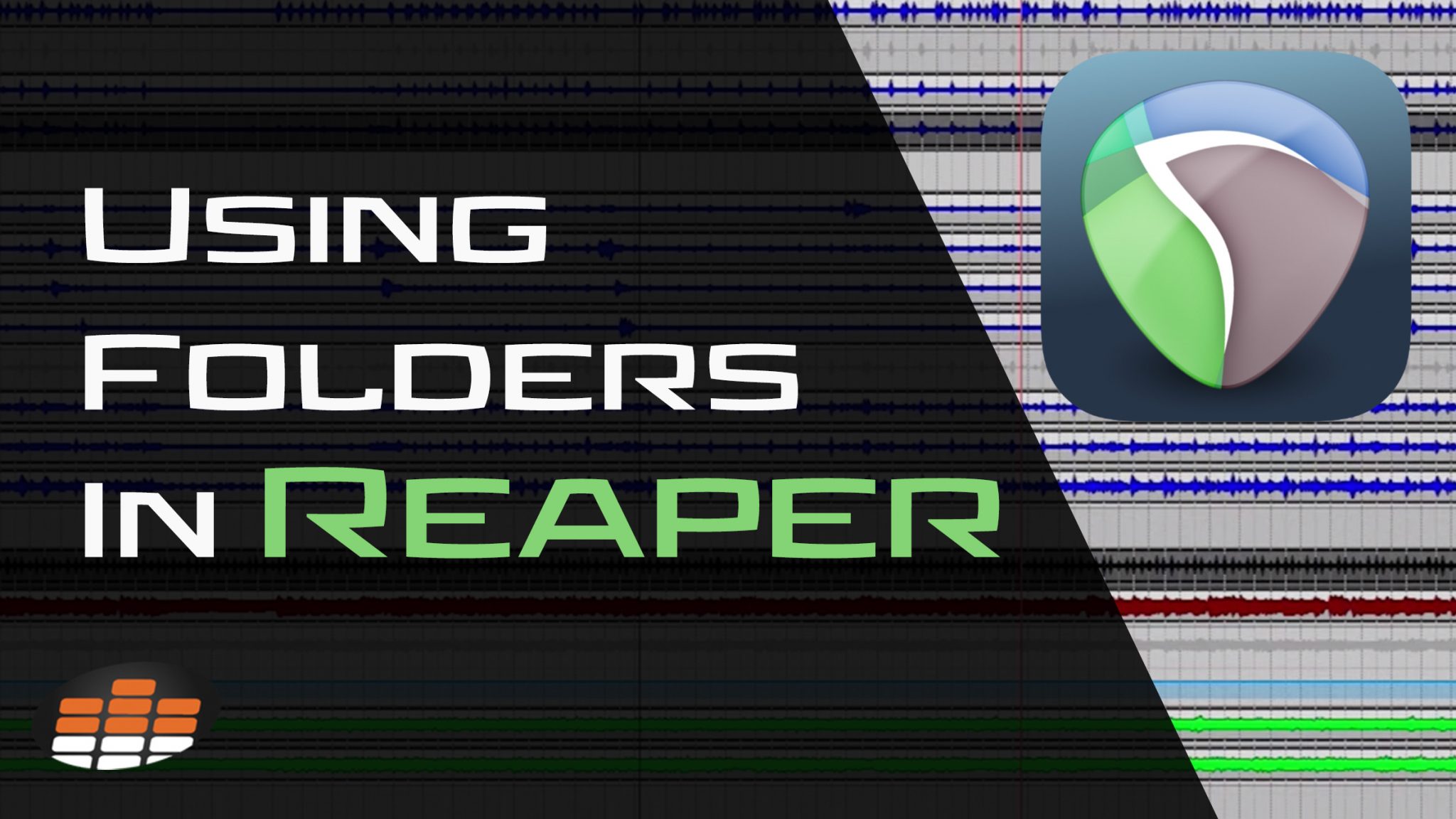Hello, everyone! It’s Adam Steele, the Reaper guy, and today I’m excited to talk to you about something that has revolutionized my workflow – Reaper folders. Folders are an incredibly powerful tool in Reaper that allows you to organize complex projects with ease. Whether you’re mixing music or editing audio, using folders can turn a seemingly overwhelming project into manageable and bite-sized pieces. In this blog post (and the video above), I’ll show you how to use Reaper folders and demonstrate how they can enhance your productivity and creativity.
The Power of Reaper Folders
Reaper’s folder tracks offer a powerful way to organize your mixing sessions and create submixes effortlessly. While you can use sends and aux tracks for effects, folders shine when it comes to grouping related instruments, creating drum busses, and organizing stems. You can think of them as nesting folders, where each folder contains multiple subfolders or tracks, resulting in a clean and easily navigable project. Here’s a step-by-step guide to using Reaper folders effectively in Reaper.
Organizing a Complex Project
To illustrate the power of Reaper folders, let’s take a look at an album I mixed recently. This pop punk ska album had a staggering 141 tracks! The tracks consisted of drums, bass, guitars, brass, vocals, backing vocals, and various sound effects. That’s a lot to keep straight, but by putting things into folders – you can stay organized, and also process that folder with audio effects, etc. – instead of having to do every individual track.
Using Folders To Group By Instrument
One of the most powerful ways to use folders is for grouping tracks of the same instrument. In the video, I demonstrated this by organizing four rhythm guitar tracks, each with different microphone types. I placed each microphone track inside a folder for the respective rhythm guitar. This grouping allowed me to treat each rhythm guitar as a single source, simplifying the Reaper mixing process significantly.
How to Create Folders in Reaper:
- Creating a Reaper Folder Track: Double-click on an empty space below the existing tracks or use the shortcut (“command + t” on Mac, “control + t” on Windows) to create a new track. Give it a suitable name. Position the new track above the tracks you want to include in the folder.
- Enabling the Folder: Click on the folder icon in the lower left-hand corner of the new track. Alternatively, you can drag and drop selected tracks onto the new track to instantly create the folder. All the child tracks will now be bussed to the parent folder track.
- Nested Reaper Folders: Take organization to the next level by creating nested folder tracks within the main folder. This allows for more complex bussing relationships and further streamlines your mixing workflow.
- Optimizing the View: Use the triangle icon on the parent track to minimize the size of the child tracks, providing a cleaner view in the project window or mixer. To speed things up, consider assigning a key command through the “Actions” menu for quick access to this feature.
- Additional Options: In the Mix view, right-clicking on an empty space gives you access to various options, including showing or hiding folders and more. Explore these options to customize your workflow according to your preferences.
Folder tracks are a game-changer for organizing your mixing projects efficiently in Reaper. By utilizing this feature, you can create submixes, group related tracks, and enhance your overall productivity in Reaper. Whether you’re working with drum parts or other instruments, folders will help you maintain a well-structured and focused mixing environment.
Now That You Know About Folders…Are You Ready For More?
Ready to unlock the full potential of Reaper? Discover ‘The Ultimate Guide to Reaper’ course and revolutionize your music production. This comprehensive course takes you step-by-step through Reaper’s powerful features, from setting up your session to advanced mixing techniques. Gain insider tips from industry professional Adam Steel (aka “The Reaper Guy”), master essential tools, and elevate your music to new heights.
Whether you’re a beginner or experienced user, this course will empower you to create professional-grade mixes.
Enroll today and take control of your music production journey.
Download our most popular resource: 6 Steps for Creating Radio Ready songs to learn the fundamentals of what goes into a professional mix from renowned Producer, Songwriter & Mixer Warren Huart, who has worked on several Grammy-nominated albums!





